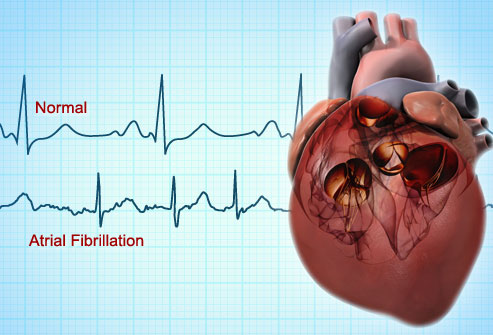Atrial fibrillation is a growing global health concern
Atrial fibrillation, long considered the most common condition leading to an irregular heartbeat, is a growing and serious global health problem, according to the first study ever to estimate the condition’s worldwide prevalence, death rates and societal costs.
The World Health Organization data analysis, led by Sumeet Chugh, MD, associate director of the Cedars-Sinai Heart Institute, shows that 33.5 million people worldwide – or .5% of the world’s population – have the condition. Funded partly by the Bill & Melinda Gates Foundation and the Cedars-Sinai Heart Institute, the analysis was conducted with the assistance of the University of Washington’s highly respected Institute for Health Metrics and Evaluation, which seeks to identify the world’s major health problems so society can best allocate medical resources and funding.
Atrial fibrillation occurs when electrical impulses in the upper chambers of the heart, called the atria, become chaotic and cause an irregular heartbeat. The irregular heartbeat can result in heart palpitations along with a variety of symptoms such as fatigue. When the heart isn’t pumping blood effectively, blood can stagnate and clot. If the clots break apart and travel to the brain, they can cause a stroke.
The study, believed to be the first to determine the number of people globally with atrial fibrillation, is published online in the peer reviewed medical journal Circulation and is scheduled to be published in the Feb. 25 print edition of the journal.
“Atrial fibrillation has a huge cost in every sense of the word,” Chugh said. “It can lead to stroke, hospitalization, as well as lost productivity. Our findings indicate that atrial fibrillation is on the rise around the world and it’s a huge public health burden.”
During the analysis, Chugh and a team of researchers systematically analyzed data from selected population-based research studies, from among 1,784 published medical research studies on atrial fibrillation, to estimate global and regional prevalence, incidence and mortality related to this condition.
 “Finding out the scope of the problem is step No. 1,” Chugh said. “Our hope is that we can develop a sustainable global plan to manage atrial fibrillation and find new and effective ways of preventing this condition.”
“Finding out the scope of the problem is step No. 1,” Chugh said. “Our hope is that we can develop a sustainable global plan to manage atrial fibrillation and find new and effective ways of preventing this condition.”
Among the study’s findings:
In 1990, an estimated 570 of 100,000 men had atrial fibrillation. In 2010, the prevalence rate for men was 596 of 100,000.
For females, an estimated 360 of 100,000 women had atrial fibrillation in 1990. In 2010, that rose to 373 of 100,000.
In 1990, the number of new cases of atrial fibrillation in men was estimated at 61 per 100,000 population. In 2010, the number of men with new cases of atrial fibrillation rose to 78 per 100,000.
The number of new cases of atrial fibrillation in women was 43 per 100,000 population in 1990. In 2010, the number of new cases in women was 60 per 100,000.
Although deaths linked to atrial fibrillation are rising around the world, more women with atrial fibrillation are dying in developing countries. In the U.S., deaths linked to atrial fibrillation now are comparable between the sexes.
“A lot more research is needed to fully understand this continuing worldwide increase,” Chugh said. “Although the chance of developing atrial fibrillation does increase with age, these findings are not entirely explained by the aging world population. Several other factors have been suggested and need to be better evaluated, from obesity and hypertension to air pollution.”
###
About the Cedars-Sinai Heart Institute
The Cedars-Sinai Heart Institute is internationally recognized for outstanding heart care built on decades of innovation and leading-edge research. From cardiac imaging and advanced diagnostics to surgical repair of complex heart problems to the training of the heart specialists of tomorrow and research that is deepening medical knowledge and practice, the Cedars-Sinai Heart Institute is known around the world for excellence and innovations.